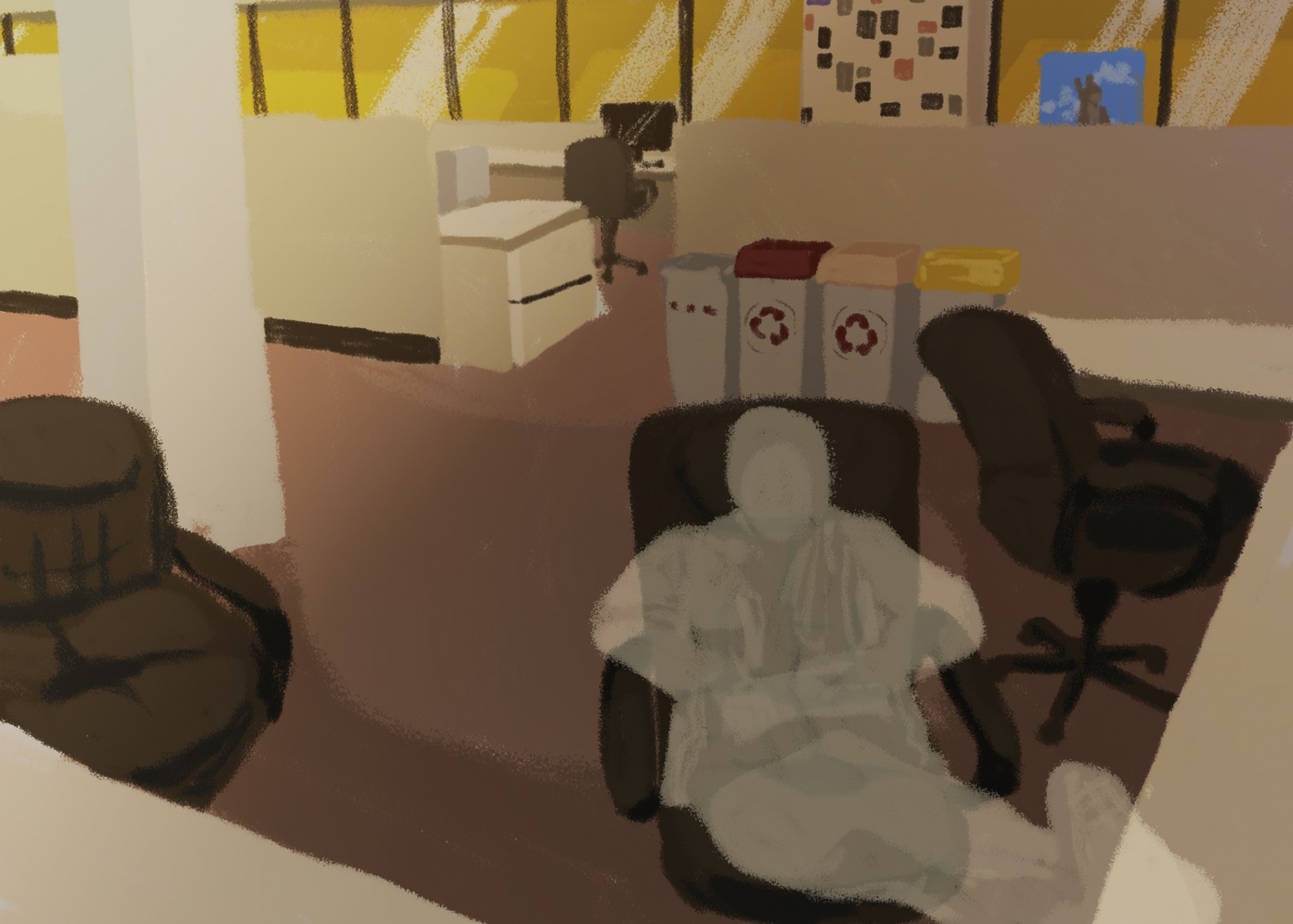Walking out of the Minnesota Daily office on March 4, I marveled at the warming weather. At about 10:15 p.m., it was just over 32 degrees outside, which to us Minnesotans is a sign of spring. Just like the past 43 publishing nights, we split into two cars for rides home. We sang along with Bohemian Rhapsody when it came on the radio, station 107.9, before bidding “goodbye, have a good spring break.”
I went to sleep early that night, relishing in the relaxation that comes with time off from school. I was excited to drive up north with a few friends, making a trip out of covering the Board of Regents retreat in Duluth. We had rented a cabin outside the city, planning to go hiking with Indy, the newsroom beagle, cook at home and watch movies. We needed to be careful about the coronavirus; we had already put it on the front page twice, once that night. Two University of Minnesota students were in quarantine, and study abroad programs in China, Italy and South Korea had been canceled.
The night before we planned to leave, I got a text at 10:41 p.m. It was Natalie, a friend and fellow reporter, wondering if she should stay home from the trip. She had potentially been exposed to COVID-19. “Idk if I’m supposed to be worried,” she texted me. “I don’t think I have it but I don’t wanna put any of you guys at risk.” By that date, March 10, three people had tested positive in Minnesota. Natalie’s parents wanted her to quarantine, and she was beginning to agree.
So a little after 7:30 a.m., Natalie stood on the sidewalk in her pajamas and lent Hana and I her car, Suby, which could handle the 274-mile round trip better than my ancient Volvo, Arthur. We sipped sugary iced coffee and traded questions about ethics in reporting as we embarked. I devoured a cinnamon-sugar bagel with peanut butter and jelly, toasted, and she nibbled her plain one with strawberry cream cheese. Standing in an empty Brueggers, I had felt important telling her “Don’t worry, the Daily can cover your breakfast. You’re working.” We had never spent much time alone together, but there were more topics to cover than we had time for during the two-hour drive. We came up with a plan for how to better edit stories before publication and talked about her aspirations for next year.
I had volunteered to take photos for the story. On the top floor of the Cloquet Forestry Center, we set up for the five-hour meeting, locating the least obtrusive seats in the room that were still near enough to an outlet. The space was so intimate that heads turned when my camera clicked. Some of the Regents posed or waved; I wondered how our photographers managed to get candid shots in situations like these. We were the only news outlet there.
Our phones buzzed at 1:03 p.m. with an email from President Joan Gabel. To prevent the spread of the coronavirus, the University would switch to online classes until at least April 1. In my head, I wondered if President Gabel, who was only feet away from me, had stepped outside to press send. Pre-scheduled emails don’t go off three minutes past the hour, I thought to myself. Did the Regents know it was coming, too? As the institution’s top governing body, they had been given the impossible task of leading the University through the outbreak, which that day had been declared a pandemic by the World Health Organization. They were responsible for thousands of jobs, summer plans and diplomas. Discussing graduation, President Gabel’s gaze turned to our corner of the room; her look alone told us that she, too, was sad commencement had to be canceled.
We stopped at a diner outside of Cloquet, called the Family Tradition, before heading home. I wondered if we should even be there. What if we have it without knowing, and we’re exposing everyone in this small town? Still, it felt good to drink the irony water you only find in northern Minnesota from one of those tall, thick plastic glasses with the Coke logo on the side. We had refused to accept offers to share the Regents’ catered lunch, instead downing coffee with powdered creamer to tide ourselves over. We recounted the meeting’s adventures (Can you believe Dean Tolar was there?) and inhaled a stack of pancakes each. They were thin and buttery, almost like crepes, and this time, the Daily didn’t pay for it: it was personal. Then we went home, and I fell asleep early.
One day later, all Big 10 sports were canceled. Two days later, the first University of Minnesota student tested positive. (Thank God, it wasn’t Natalie). Four days later, the Minnesota Daily announced that there would be no physical print papers until in-person classes resumed. “We did not make this decision lightly. But we are taking precautions against COVID-19 for our staff who spend countless hours in the newsroom each week preparing the paper for publication,” I wrote. I asked my grandma to proofread the article before I hit publish.
Five days later, on Monday, March 16, I called in to a Zoom meeting with the other editors. We laughed about how foreign the online format felt, having met nearly each week since June, in person, to plan the following week’s coverage. At 4:52 p.m., in an odd mixture of disappointment and fear, we all let out a sigh, in perfect unison: Gabel was back in our inboxes. In-person classes had been canceled until the end of the semester.
At 4:53 p.m., I texted my boyfriend with the news. He was used to play-by-play updates about my job; we met at the Daily last year.
“I think everything for the foreseeable future is cancelled,” he replied.
At that moment, I realized that I would never again meticulously pour over the final copy of the paper before sending it to the printer, knowing that if something went wrong, it was my job to fix it. I would not wait for stories to be edited, checking in with my co-workers one by one and picking up one of Grandma Shelly’s cookies along the way. I would not debate which photo was best for the front page and answer, holding up four or five fingers, how many columns the front page story warranted. I would not pin new mementos to our shared newsroom wall, adding to the dozens of photos, notes and reminders that had been there longer than our collective memories. Is that a mug shot? Who says “professor” is not a title? Is that Chris Ison? I would not make two over-filled bowls of popcorn and ask for help finding the salt before placing them on the wobbly table in the center of the room. I would not clean it off the day after, ridding it of coffee spills and popcorn kernels and crumpled up pages of reporter’s notebooks.
I would not spend time in the office again as editor-in-chief.
I did not get to say goodbye.
Sitting on my front steps on April 25, I notice that the weather has warmed considerably since March. But what’s more enjoyable is the contrast between the fresh outside breeze and the stale air of my small apartment. I watch my neighbors enjoy the freedom of walking outside, together, and wonder what the people I care about are doing today. In eight days, exactly two months after my last publishing day, I will spend my last day as editor-in-chief, having passed the prior 40 as editor-during-the stay-at-home-order.
Today, we join those who have experienced this same pattern, realizing that the short time they get to spend in their student newsroom was cut short. Join us in the campaign to #SaveStudentNewsrooms — or, what I like better — remember student newsrooms. And remember what they give us.









